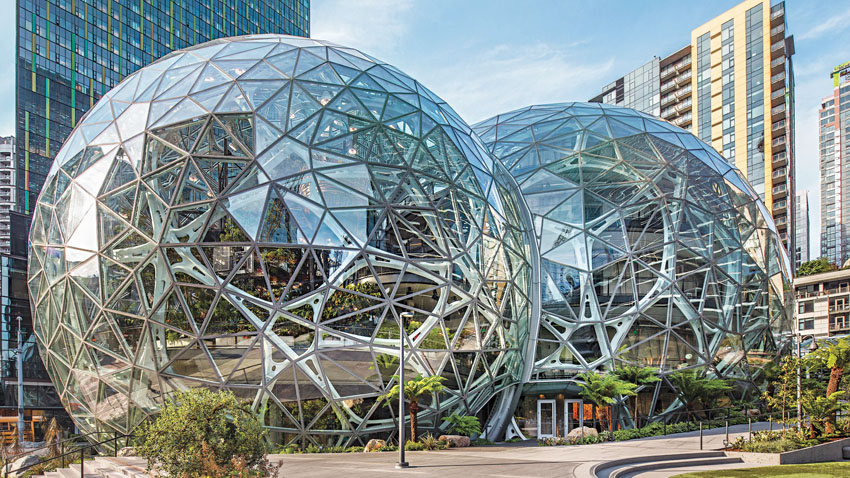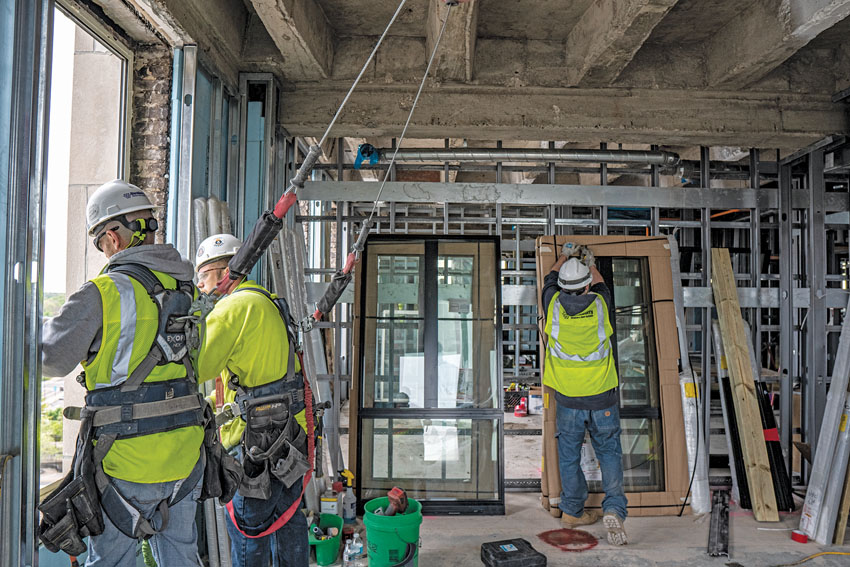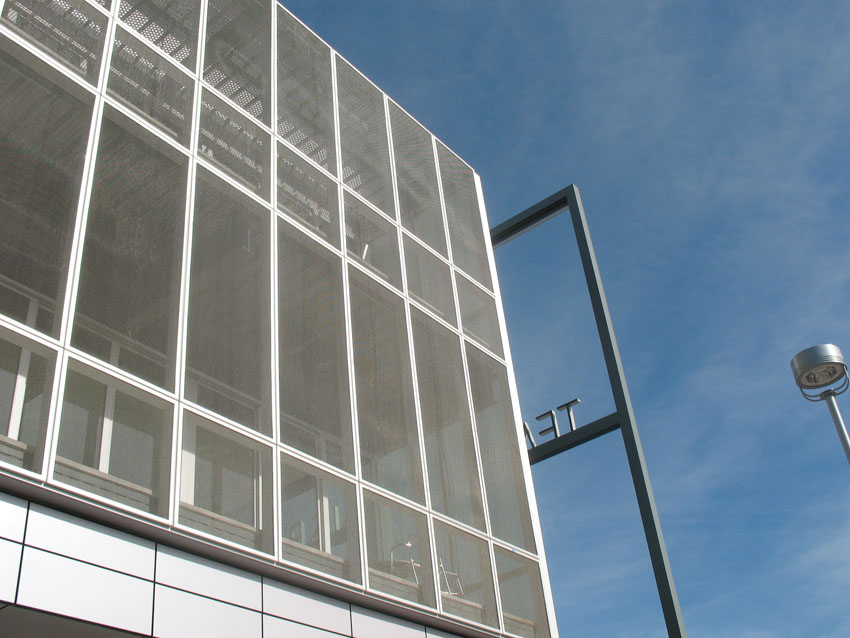Choices Abound for Attractive & Smart Facade Design
Learning Objectives:
- Explain how the thermal performance of the facade can be maintained or even improved during historic-window replacement selection.
- Describe how steel curtains can be incorporated into facade design for both aesthetic and energy-efficiency benefits.
- List the critical attributes required to ensure a watertight building envelope when specifying a joint expansion system for facade designs.
- Discuss how advancements in low-emmisivity (low-e) window coatings can help meet or exceed stringent code requirements and provide more energy-efficient and comfortable occupied spaces.
- Understand the importance of specifying and designing a facade that can help protect the building and occupants from seismic and extreme weather events.
Credits:
This course is approved as a Structured Course
This course can be self-reported to the AANB, as per their CE Guidelines
Approved for structured learning
Approved for Core Learning
This course can be self-reported to the NLAA
Course may qualify for Learning Hours with NWTAA
Course eligible for OAA Learning Hours
This course is approved as a core course
This course can be self-reported for Learning Units to the Architectural Institute of British Columbia
Julia Morgan, an American architect and engineer who designed more than 700 buildings in California, including the Hearst Castle in San Simeon, California, once said, “Architecture is a visual art, and the buildings speak for themselves.” This sentiment is no truer than when looking at the facade of the structure. The facade is the “first-blush” impression that will set the tone for the entire experience within the walls of the building.

Photo courtesy of Vitro Architectural Glass
The pinnacle of facades, the Amazon Spheres leverages triangular double-laminated insulated glass units (IGUs) with low-e coatings on low-iron glass, delivering a VLT of 74 percent and an SHGC of 0.41.
Today, architects have an ever-expanding pallet of options when it comes to facade types and styles. As the number of options grows, it is important to keep several key aspects in mind. Specifically, the balance of beauty and function. Facades must not only satisfy the visual aspirations of the project but also do their part to support energy efficiency, durability, comfort, security, and occupant well-being. A facade design that has great beauty but fails to provide for thermal protection, moisture management, basic occupant safety, and accommodate for freeze-thaw cycles does a disservice to both the client and the community.
Striking the balance between beauty and durability requires an examination of both needs. Let’s take a look first at some innovations and new technologies in facade materials and design elements that can help bring beauty to building facades.
Updating the Vintage
An interesting challenge in modern architecture is to incorporate modern technologies into historical situations. Architectural styles helped shape the history of cities in North America in the late 19th and early 20th centuries. Character-defining aspects of window openings in the facades were artful, decorative elements while being functional and practical, allowing natural lighting and views. When updates to historic or vintage buildings are needed, few building owners will want to compromise the authentic look and feel of existing frames and panes.
Often the signature looks of classic windows included narrow or wide sightlines and curved window tops with thinner frames and shallow openings. These design elements are not always possible using conventional framing materials, and it would seem traditional materials may not work to replace traditional window styles. Modern thermal-barrier aluminum framing is the ideal material due to its inherent flexibility, option of narrow sightlines, bent shapes, and worry-free performance.
Besides materials and performance considerations, another challenge for architects is to carefully design installation spaces in historic buildings to incorporate often larger and more complicated frames for modern windows. Thicker frames and multiple panes often require a deeper space and a more involved insulation and air-sealing strategy to ensure the windows perform as expected. This can be especially true in areas that are prone to extreme weather events. High-wind areas where hurricanes are expected can introduce their own set of challenges, both aesthetic and code related, when updating historic buildings.

Photo: Taylor Kallio, Kalamazoo Aerial Media
Installing modern windows in historical buildings often requires a challenging redesign of the openings to incorporate larger, higher-performing framing materials.
In With the New
If the facade design calls for a more contemporary look, coiled wire fabric can provide a unique yet functional aesthetic. Coiled wire fabric is constructed of interlocking metal wire spirals that form a durable mesh panel. Because of this unique construction process, panels may be spliced together at the job site for projects requiring larger spans of fabric than shipping vehicles are able to accommodate. Splicing on-site means that projects of huge scale, like sports arenas or massive convention centers, can have a near seamless facade material extending over the entire building. The material is customizable and flexible and has a variety of metal material options as well as colors, attachment methods, and finishes.
As part of a facade strategy, coiled wire fabric can be used in a variety of situations that require a unique solution. For instance, parking garages attached to commercial buildings can pose a dauting challenge for architects. Incorporating an overall design scheme that is both attractive yet functional can be accomplished with coiled wire fabric, specifically in terms of safety. Coiled wire fabric systems are utilized for fall protection in lieu of traditional railing infill or walls for elevated areas. The material provides fall protection plus ventilation—which is helpful for builders to meet code requirements, allowing air to flow freely.
Coiled wire fabric serves a wide range of functions when installed as a facade for building exteriors or parking structures. Solar shading is vital to the comfort and productivity of workers, especially in a day and age where glass is increasingly used on offices and skyscrapers to utilize natural daylighting and reduce energy consumption. Although, too much natural sunlight may produce an uncomfortable environment for building occupants. One way to allow a degree of sunlight to ideally illuminate interiors is a coiled wire fabric facade. The material will let light through but with less intensity. In fact, when used as an exterior shade or scrim, coiled wire fabric materials have shown to reduce energy consumption by up to 12.3 percent—providing shade and effectively reducing air-conditioning costs.
Metal wires are available in durable powder coatings. Plus, in comparison to other metal-mesh systems, coiled wire fabric can span longer distances and is lightweight—eliminating additional structural embedment requirements or extra supports to bear the system’s weight.

Photo courtesy of Cascade Architectural
Coiled wire fabric can serve as a fall-protection barrier in open-air parking garages, balconies, and elevated walkways.
Notice

www.azonintl.com

www.cascade-architectural.com

www.inpro.com

www.vitroglazings.com/solarban















